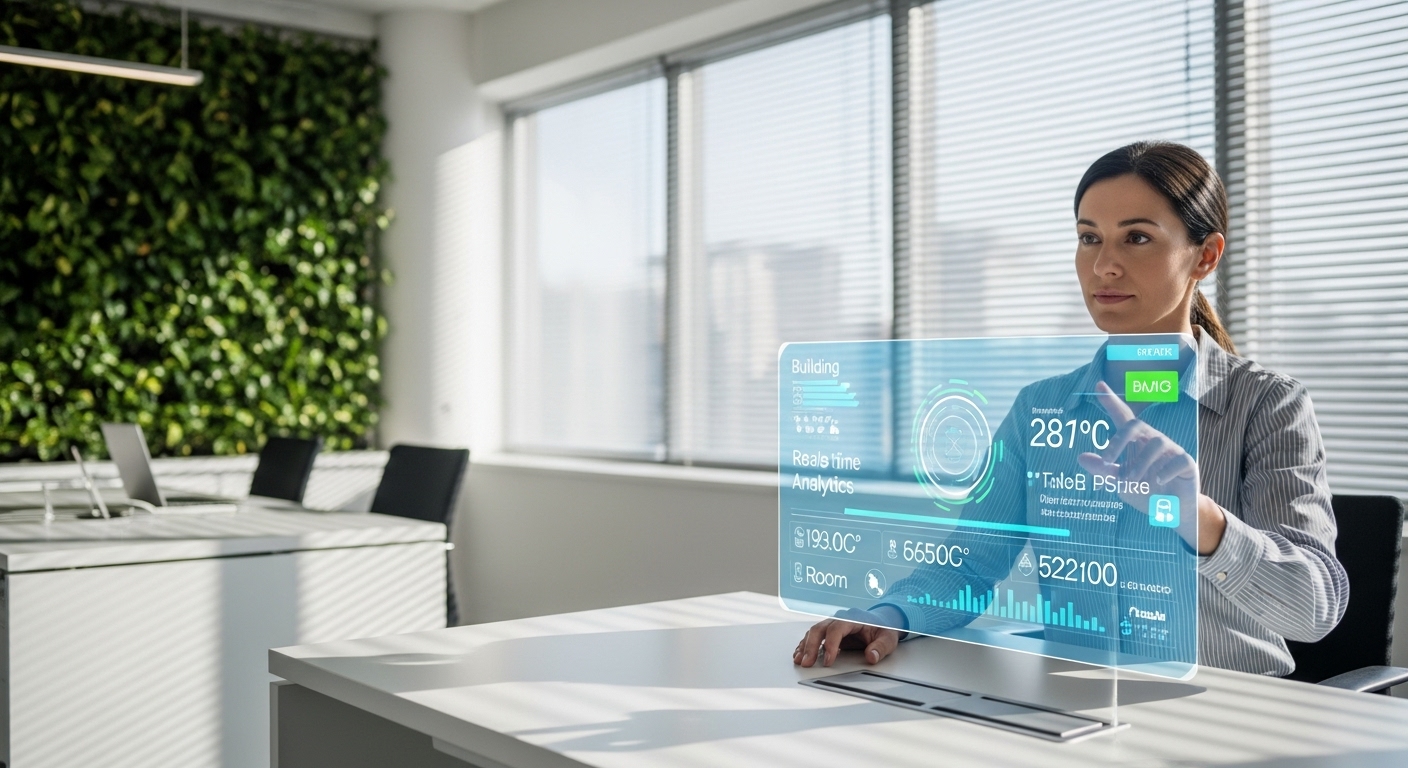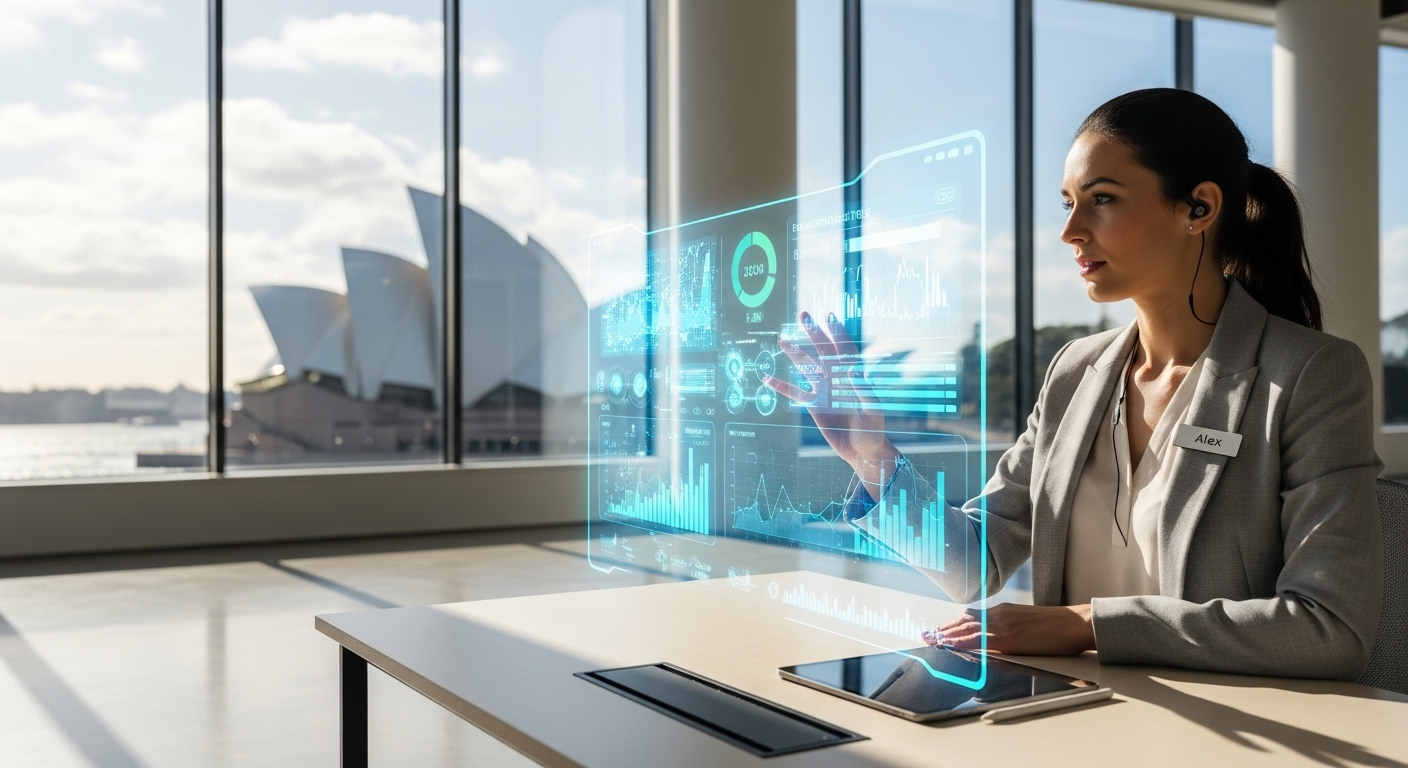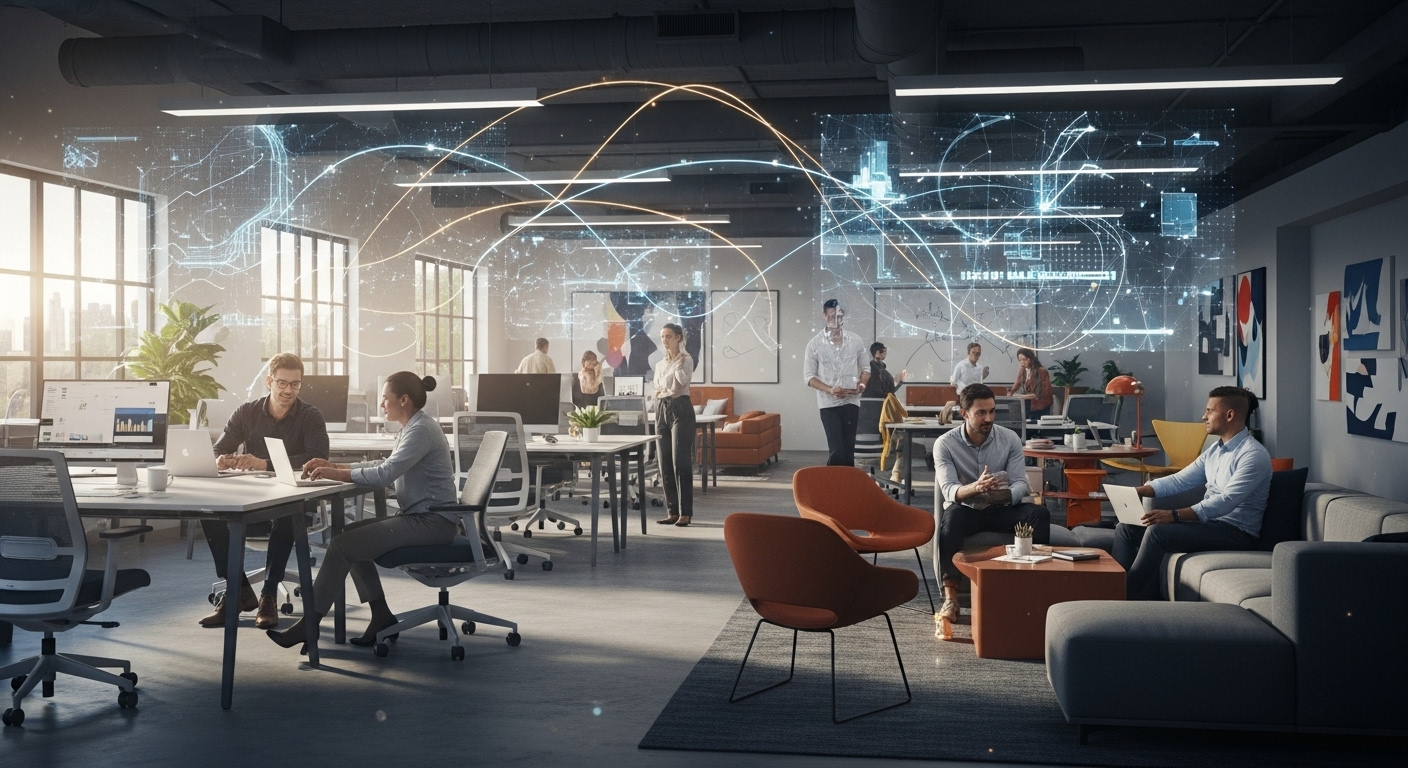The traditional office is a static entity—a collection of desks, walls, and wires that remains largely unchanged day to day. But in the era of the Future of Work, this model is rapidly becoming obsolete. Businesses now demand environments that are as agile and dynamic as their teams. Enter the ‘responsive workplace,’ a concept moving from science fiction to business reality. Fueled by advancements in the Internet of Things (IoT) and Artificial Intelligence (AI), the responsive workplace is an intelligent ecosystem that senses, adapts, and reacts to the needs of its occupants in real-time. It’s an office that not only houses employees but actively works to enhance their productivity, support their well-being, and achieve critical sustainability goals. This shift isn’t merely about adding gadgets; it’s a strategic move to create spaces that are more efficient, intuitive, and human-centric than ever before. This article will explore the core technologies powering this revolution, from the sensors that serve as its nervous system to the AI that acts as its brain. We will delve into the tangible benefits for both employees and the bottom line, navigate the practical challenges of implementation, and look ahead to the future of truly autonomous work environments.
What is a Responsive Workplace?
A responsive workplace transcends the simple definition of a ‘smart office.’ While a smart office might feature isolated tech solutions like app-controlled lighting or a digital receptionist, a responsive workplace is a deeply integrated system. It operates on the principle of continuous feedback and adaptation, creating an environment that fluidly adjusts to patterns of use, environmental conditions, and the specific needs of individuals and teams. At its core, it is built on a foundation of data. Countless data points—from room occupancy and air quality to energy usage and ambient noise levels—are collected and analyzed to drive automated actions and inform strategic decisions. This transforms the physical space from a fixed cost into a dynamic asset. Imagine an office where meeting rooms automatically adjust temperature and lighting based on the number of attendees, where cleaning schedules are optimized based on real-time space utilization data, and where employees can instantly find and book a quiet desk that suits their preferences for the day. This isn’t just about convenience; it’s about eliminating friction and creating an environment where employees can perform their best work. The responsive workplace understands that the ideal conditions for a collaborative brainstorming session are different from those needed for focused, deep work, and it has the intelligence to provide both simultaneously.
The Tech Trinity: IoT, AI, and Integration
The magic of the responsive workplace is powered by the synergy of three core technological pillars: the Internet of Things (IoT), Artificial Intelligence (AI), and seamless integration. Think of IoT devices as the office’s sensory organs. These are the thousands of tiny, connected sensors that gather raw data about the physical environment. Occupancy sensors detect human presence in rooms and at desks, environmental sensors monitor temperature, humidity, and CO2 levels, and light sensors measure the amount of natural daylight. This constant stream of information is the lifeblood of the system. Next, Artificial Intelligence acts as the central brain, processing this torrent of data to find patterns and make intelligent decisions. AI algorithms can predict which meeting rooms will be in high demand, identify underutilized areas of the office, and learn the collective preferences of the workforce to optimize climate and lighting for maximum comfort and minimum energy waste. It’s the AI that turns raw data like ‘a person is at desk 47’ into an actionable insight like ‘dim the lights and lower the HVAC in the unused north wing to save energy.’ Finally, and most crucially, is integration. This is the central nervous system that allows the sensors and the AI to communicate and work in concert with the building’s operational systems, such as the HVAC, lighting, security, and room booking software. Without a robust integration platform, you simply have a collection of smart gadgets. With it, you have a cohesive, intelligent ecosystem where an employee’s calendar booking can trigger the room to power on, adjust the temperature, and lower the blinds just before a meeting starts.
Boosting Productivity and Employee Well-being
While the technology is impressive, the true measure of a responsive workplace is its impact on people. By creating an environment that caters to individual needs and removes daily friction, these intelligent systems directly contribute to higher productivity and enhanced employee well-being. Consider the simple but chronic frustration of finding a suitable place to work. In a responsive office, a mobile app can show an employee a real-time map of available desks, phone booths, and collaboration zones, filtered by features like quietness, window access, or available monitors. This eliminates wasted time and reduces stress. The ability to personalize one’s immediate environment—adjusting desk lighting or temperature via an app—gives employees a sense of control and comfort that is proven to boost focus and satisfaction. Beyond comfort, these systems are critical for health and safety. Continuous air quality monitoring can ensure proper ventilation and flag potential issues, a key concern in a post-pandemic world. Data on space usage can also inform social distancing protocols and trigger sanitation alerts for high-traffic areas. As one workplace strategist noted,
“The goal is to create an environment so seamless that employees don’t have to think about the logistics of the office. The space should just work for them, anticipating their needs and empowering them to focus on what they were hired to do.”
This human-centric approach transforms the office from a mere location into a strategic partner in an employee’s success.
The Green Dividend: Achieving Sustainability Goals
A major driver behind the adoption of responsive workplace technology is the powerful business case for sustainability. An intelligent office is inherently a greener office. The most significant impact is on energy consumption. Commercial buildings are notoriously inefficient, with lighting and HVAC systems often running in empty rooms and entire floors after hours. A responsive workplace eradicates this waste. By leveraging occupancy data, these systems ensure that lights are on and climate control is active only when and where people are present. This granular control can lead to dramatic reductions in energy use, with studies showing potential savings of 20% to 40%. This not only lowers the building’s carbon footprint but also generates substantial cost savings on utility bills. The benefits extend beyond energy. Smart resource management can optimize everything from waste collection, by using sensors to signal when bins are actually full, to water usage. Furthermore, the rich data on space utilization provides powerful insights for long-term real estate strategy. By understanding exactly how their space is being used, companies can make informed decisions about their portfolio, potentially reducing their overall square footage without compromising on employee experience. In a hybrid work model, this means avoiding the cost and environmental impact of maintaining vast, underutilized office spaces. This ‘green dividend’ makes investing in smart technology a fiscally prudent and environmentally responsible decision.
Navigating the Challenges: Security, Cost, and Adoption
Implementing a responsive workplace is a transformative project, and it comes with a unique set of challenges that require careful planning. The most critical concern is data security and privacy. An office that collects granular data on employee movement and behavior must be fortified with robust cybersecurity protocols. This includes end-to-end data encryption, secure network architecture, and, crucially, a transparent privacy policy that clearly communicates to employees what data is being collected and why. Building trust is paramount to successful adoption. The second major hurdle is the initial investment. The cost of sensors, software platforms, and integration can be significant. However, leaders should view this not as an expense but as a long-term investment with a clear return on investment (ROI). The ROI is calculated through direct savings on energy and real estate, coupled with the less tangible but equally valuable gains in productivity, talent retention, and innovation. The third challenge is technical complexity. Getting disparate systems from multiple vendors to communicate seamlessly is a significant IT undertaking. Success often requires a dedicated project team and partnership with a specialized systems integrator who understands both building technology and enterprise IT. Finally, cultural adoption cannot be overlooked. Simply installing the technology is not enough. Companies must invest in change management, training employees on how to use the new tools and clearly communicating the benefits to their daily work lives. Overcoming these hurdles requires a strategic, holistic approach that balances technology, security, finance, and people.
The Future is Autonomous: What’s Next for the Responsive Workplace?
The current generation of responsive workplaces is already revolutionary, but the technology continues to evolve at a breathtaking pace. The next frontier is the truly autonomous workplace—an environment that not only responds but actively predicts and self-optimizes with minimal human intervention. A key enabler of this future is the concept of a ‘digital twin.’ This is a complete, dynamic virtual replica of the physical office, updated in real-time with data from IoT sensors. With a digital twin, facility managers can simulate the impact of changes—like a new office layout or HVAC setting—in the virtual world to find the optimal solution before implementing it physically, saving time and money. Generative AI will also play a larger role, moving beyond simple analytics to become a strategic advisor. An AI could analyze workflow patterns and suggest reorganizing teams or redesigning a specific area to foster better collaboration and reduce bottlenecks. Hyper-personalization will become the norm, with the building recognizing individuals via their smartphone and automatically adjusting lighting, temperature, and even the digital content on nearby screens to their pre-set preferences. Predictive maintenance will become standard practice, as AI analyzes equipment performance data to predict failures before they happen, scheduling repairs for a quiet weekend and ensuring zero downtime for critical systems. The future office will be a self-healing, self-optimizing entity that learns and evolves alongside the organization it serves, creating the ultimate platform for innovation and peak performance.
Conclusion
The responsive workplace represents a fundamental paradigm shift in how we view the relationship between people, place, and technology. We are moving away from the era of static, one-size-fits-all buildings and into an age of living, breathing ecosystems that are tailored to the rhythms of the modern workforce. By harnessing the power of IoT and AI, businesses can create environments that are not only intelligent but also empathetic to the needs of their employees. The benefits are a compelling trifecta of enhanced productivity, improved well-being, and significant progress toward sustainability goals. As we have seen, the path to implementation has its challenges, requiring strategic investment and careful attention to security and change management. However, the rewards—a more engaged workforce, a more efficient operation, and a reduced environmental footprint—are undeniable. The question for business leaders is no longer *if* they should invest in smart office technology, but *how* quickly they can build a responsive workplace. In the competitive landscape of the future, the most successful companies will be those whose physical environments are as agile, intelligent, and forward-thinking as their people. Investing in a responsive workplace is, ultimately, an investment in the resilience and long-term success of the entire organization.





